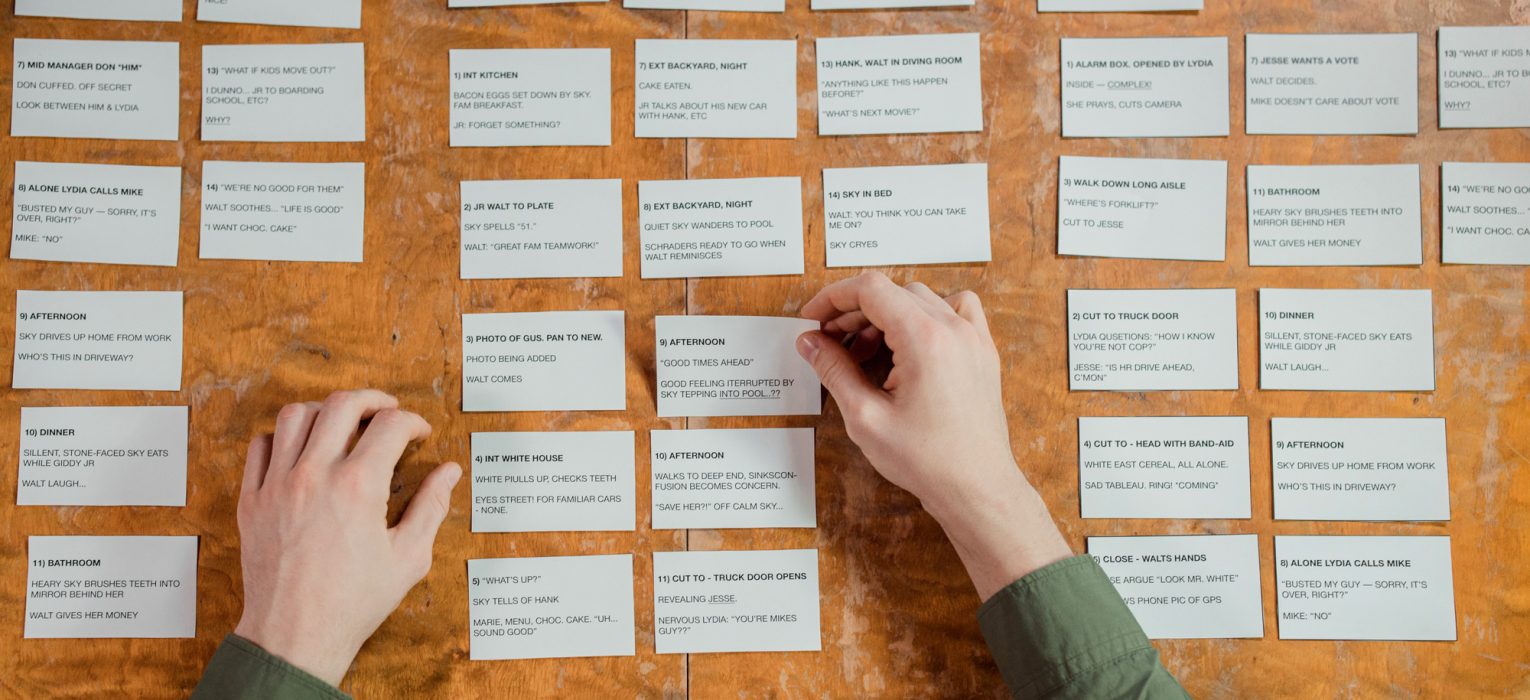Story mapping, a technique often used in screenplays, helps readers with high incidence disabilities to better visualize stories and connect ideas.
What if I told you that a group of people existed who, despite your best efforts, don’t understand your writing the way you intended? Who is often lost and confused by basic composition elements, like event sequence and structure? The purpose of writing is to communicate information, and to communicate effectively. But for this group, that goal can seem all but impossible.
For readers with high incidence disabilities (HID) such as learning disabilities, behavioral disorders, autism, and physical/sensory needs, information contained in writing is often difficult to access. These readers often require innovative strategies to help them understand what they’re reading. Often, helpful sources for these readers come from other fields of creativity, and a movie script (screenplay) can be one of those sources.
THE RESEARCH
The article “Using Elements of a Screenplay to Promote Visualization and Increase Reading Comprehension in Secondary Students with High Incidence Disabilities” by Lori Ann C. Dunn (2021) details a study designed to evaluate whether established screenplay techniques increase reading comprehension in readers with HID, such as explicit story mapping. Story mapping entails using a graphical organizer to help the students learn the fundamental elements of a story, such as the characters, setting, basic plot, and resolution. Dunn conducted a three-week study with 10 high school students with HID and used a pre- and post-test to measure performance.
The pretest exam measured reading comprehension and visualization. After taking it, the participants learned a modified version of a plot map used as their graphical organizer for story mapping. A plot map visually displays the different elements of a story’s narrative in linear form, including the exposition, rising action, climax, falling action, and resolution. Participants then practiced identifying each element of the map in various movies. Students then identified map elements in children’s books and in a short story. Each participant was given a plot map during these element identification exercises.
After learning the plot map, participants were much more likely in the post-test to correctly sequence the events in a narrative and identify each element within the text. Dunn (2021) found that “students were able to answer questions with greater detail, and considerable gains were made when completing the story maps and identifying story grammar” (395).
“Students were able to answer questions with greater detail, and considerable gains were made when completing the story maps and identifying story grammar.”
—Lori Ann C. Dunn (2021)
THE IMPLICATIONS
As a writer, you can make your writing more visual by explicitly structuring your narrative according to the plot map, and making sure the elements of your story map (characters, plot, resolution, etc.) are easily identifiable. In doing so, Dunn’s (2021) results suggest that your writing will become more engaging and more accessible, especially to audiences with HID. However, using story mapping to guide the composition of your stories may not be enough.
For audiences who rely on visual representation to comprehend stories, perhaps far more helpful would be the ability to actually see visual plot maps tailored to the story they’re reading. Perhaps these maps could be appended to the front pages of a book, just as publishers sometimes include maps of fantasy lands in fictional novels.
To further assist such audiences, publishers could also establish programs and curricula to teach readers visualization techniques, or create post-reading questions to guide the reader through connections and plot points in the story that they may have missed on their own. With these innovative strategies, readers may better understand the story they are reading, which will fulfill the purpose of writing to begin with—to communicate.
To discover more about how screenplay techniques increase reading comprehension and visualization, read the full article:
Dunn, Lori Ann C. 2021. “Using Elements of a Screenplay to Promote Visualization and Increase Reading Comprehension in Secondary Students with High Incidence Disabilities.” Reading & Writing Quarterly 37, no. 5: 395–412. https://doi.org/10.1080/10573569.2020.1839611
—Kelly Pratt, Editing Research
FEATURE IMAGE BY RON LACH
Find more research
Dive into the Editing Research article “How to Use Episode Structures to Make Editors Think” to learn more about the usefulness of screenplay techniques in the broader editing world.
Learn more about reading comprehension in students with disabilities by reading Karen Sanford’s article “Factors Affecting the Reading Comprehension of Secondary Students with Disabilities.”
Sanford, Karen L. PhD diss., University of San Francisco, 2015. “Factors Affecting the Reading Comprehension of Secondary Students with Disabilities.” Order No. 3716260. https://www.proquest.com/dissertations-theses/factors-affecting-reading-comprehension-secondary/docview/1702719789/se-2?accountid=4488




